 Your new post is loading...
 Your new post is loading...
The wearable technology market is expected to reach USD 51.60 billion by 2022, at a CAGR of 15.51% between 2016 and 2022. Among the major factors propelling the growth of the wearable technology market are consumer preferences for sophisticated gadgets, increasing growth prospects of next-generation displays in wearable devices, and growing popularity of Internet of Things (IoT) and connected devices. However, the shorter life cycle of the consumer electronics sector would hamper the overall growth of the wearable technology market."Infotainment and multimedia estimated to cover maximum share of the wearable technology market" The major products in the infotainment include smart watches, augmented reality (AR) and virtual reality (VR) headsets, multimedia players with computing facilities, and smart goggles among others. The use of AR and VR in the field of entertainment and video gaming would help the wearable technology market to grow. For instance, Sony Corporation (Japan) introduced the video PlayStation with the VR glasses. These factors would drive the growth of the wearable technology market for infotainment and multimedia."Smartwatch expected to grow at the highest rate in the product segment of the wearable technology market" Wristbands and smartwatches are wearable computing devices, which are majorly used for tracking the wellness of the user. The smartwatch is a sophisticated and fashionable wearable device. This device could be connected to mobiles phones with several apps for displaying the data over the phone. Major companies such as Apple, Inc. (U.S.), Samsung Electronics (South Korea), and Fitbit, Inc. (U.S.) among others have developed such products, which satisfy the customer's need for fitness and healthcare. Hence, the consumers are more inclined to purchase such smartwatches....
CCS Insight has updated its outlook on the future of wearable tech, indicating that 411 million smart wearable devices, worth a staggering $34 billion, will be sold in 2020. The analyst claims the industry will hit $14 billion this year, with wrist-based devices – such as smartwatches and fitness trackers – continuing to dominate. Its forecast states half of all wearable tech sales over the next 12 months will be from these genres, with smartwatches making up 50% of the estimated 60 million shipments. Back in mid-2015 CCS claimed that around 20 million Apple Watches would be sold in the calendar year but it is now stating that just over 9 million Cupertino smartwatches were sold before 2016 arrived. That’s a number that gives it, according to the report, a 41 percent market share. Earlier this month Canalys estimated that Apple shipped 12 million smartwatches in 2015 – a figure it claimed was worth two-thirds of the total smartwatch market. Gartner had stated a week earlier that around 30 million smartwatches were shifted in 2015. So that’s estimates of 18, 22 and 30 million from three of the biggest analysts, proving that it’s not an exact science....
The latest figures from IDC show Fitbit continues to lead the way in global wearable device sales, but Apple slides alarmingly down the table. According to the most recent Worldwide Quarterly Wearable Device Tracker analysis, Fitbit sold 5.3 million units in Q316, up from 4.8m this time last year, while the company’s overall market share has risen to 23.0% from 2.14% in Q315. This rise can partly be attributed to Apple’s relative demise. With 3.9m units shipped in the third quarter of 2015, Cupertino held second place and a market share of 17.5%, yet this year it has fallen to 1.1m, fourth place overall, and a year over year growth of -71%. Xiaomi and Garmin, with 3.8m and 1.3m units respectively in Q316, have the silver and bronze medals and show modest growth year on year....
Wearable Internet-connected devices are shipping by the millions, with a focus on fitness leading the way. More global year-end numbers just came out showing that the wearables market grew 127% in the last quarter compared to the same quarter a year ago. And the numbers are impressive. During the holiday quarter, 27 million wearables shipped, according to the Worldwide Quarterly Device Tracker by IDC, which I consider to be one of the best and most accurate research and tracking companies. For the full year, suppliers shipped 78 million wearable devices, an increase of 172% from the year before....
Asia Pacific was home to 34% of the worlds, connected wearables last year. It is estimated that by 2025, the global wearable technology market will be worth some 70 billion U.S. dollars. So far, fitness and health related functions are dominating the space, as well as devices that can form linkage to functions currently available in a Smartphone, such as GPS. But is this just a playground for the big tech companies and early adopters? Or is this a significant shift in the way we will lead our lives?
The key question this piece of market research aims to discover, is whether or not we actually know our consumers well enough, in terms of their acceptance and expectations of such products. Are consumers in Asia Pacific playing catch up, or are they actually leading this trend in consumer wearable technology? How can marketers and manufacturers succeed in this area?...
A new product category can linger under a haze for years before striking a chord with its audience — raising a general level of awareness is usually the first obstacle to success. For makers of wearables, there's encouraging news in this regard: most modern consumers are at least aware of the products.
The challenge now is converting this cognition into sales.CCS Insight recently completed a survey of 3,000 smartphone users in China, the UK and US to determine the status of smartwatches and fitness trackers. The results indicate a level of industry achievement and required action.
An impressive 90% of those surveyed said they were at least aware of the availability of smartwatches, up from 80% a year ago. There is greater general awareness of smartwatches than of fitness trackers for the first time, with about 77% of those surveyed conscious of the product class....
|
According to the new market research report "Wearable Technology Market by Product (Wristwear, Headwear/Eyewear, Footwear, Neckwear, Bodywear), Type (Smart Textile, Non-Textile), Application (Consumer Electronics, Healthcare, Enterprise & Industrial), and Geography - Global Forecast to 2022", The wearable technology market is expected to grow from USD 15.74 Billion in 2015 to reach USD 51.60 Billion by 2022, at a CAGR of 15.51% between 2016 and 2022. The future growth of the wearable technology market is expected to be driven by consumer preference for sophisticated gadgets, increasing growth prospects of next-generation displays in wearable devices, and growing popularity of Internet of Things (IoT) and connected devices....
A three year research report from IDTechEx estimates that the global wearable technology market will be worth over $30 billion in 2016. The report says that the market will grow in three stages: 9% annually to over $40 billion in 2018, but then accelerating to 23% through to over $100 billion by 2023, before slowing to 10% to reach over $150 billion by 2026. The report details IDTechEx's coverage of the wearable technology ecosystem, which looks at the industry from many different perspectives, with detailed discussion framing core primary research and market forecasting. It studies the historical context for wearable technology products, looking at key yet contrasting sectors such as medical devices and commodity infotainment items like headphones or electronic watches. The report includes sections on key product areas such as fitness trackers, smartwatches, smart clothing, smart eyewear (including AR and VR), smart skin patches, headphones, etc. It also looks separately by application sector, including healthcare and medical, fitness and wellness, professional sports, infotainment, enterprise, military and fashion....
It’s a wait and see moment for wrist-worn devices. After a few years of betting heavily on the space, this most recent CES didn’t offer much; save for two or three smartwatch announcements, some partnerships and a couple of middling bands, the industry seems to have largely shifted its focus toward the connected home and the seemingly attainable dream of sticking Alexa in everything. Some of the hesitation on the part of manufacturers no doubt owes much to the delay of Android Wear 2.0 — which really couldn’t have come at a less opportune time, missing both the holiday rush and the biggest tech show of the year. The latest version of Google’s wearable operating system is due out next month — likely February 2. When it arrives, it’ll greet an industry licking its wounds. The disappointing CES was really par for the course following a fairly lackluster — and in some cases toxic — 2016....
Wearables are one of the most exciting developments in technology, and have inspired the fashion industry in some intriguing ways. But there’s still plenty of skepticism about everything from battery life to appearance. Some even wonder if computers strapped to our bodies 24/7 could have adverse health effects (although, to be fair, it’s hard to see how wearables would be any different from an iPhone in that regard).
TO PUT IT BLUNTLY, WEARABLES ARE STILL UGLY.
Wearables are taking time to gather momentum. Google Glass was disbanded, and Apple hasn't disclosed how many watches it is selling. Even if sales are stronger than analysts estimate, the Watch hasn't exactly gotten glowing reviews. Even the most favorable reviews suggest it is not a device for "tech novices." Walt Mossberg at Re/Code went further, dubbing one wearable a "celibacy band."
If the people who test gadgets for a living are having trouble adapting, it’s safe to say we still have a few years before wearables will be relevant to typical consumers, much less those who care about looking stylish....
But the success metrics are but one of the challenges of IoT implementation. Almost all (96%) of those involved in IoT projects say they face challenges in one form or another.
The challenges range from policies to issues with the actual technology. For any of you involved in IoT projects, this list of challenges from those already involved in IoT may sound familiar:
58% -- Business processes or policies, such as privacy issues
51% -- User adoption of new technology
41% -- Timely collection and analysis of data
40% -- Sensors or devices....
Are wearables the next big thing for smart products or a high-cost segment being forced into the market in lieu of meaningful innovation? It appears that the latter may be closer to the truth at the moment, as Juniper Research has found that very few consumers are interested in expensive wearable gadgets.
From a survey of just over 2,000 smartphone owners in the UK and US, the research found that only 1 in 5 customers are prepared to pay more than $175 for any sort of wearable device. This doesn’t bode well for the range of more expensive smartwatches that have hit the market lately, and probably also goes some way to explain the popularity of lower cost sports wearables, such as the FitBit range.
Starting at $300, the recent Samsung Gear S2 is way above the apparent price ceiling for wearables.However, this trend is somewhat at odds with the research team’s finding about the ‘coolest’ brands. Both Apple and Samsung, which offer the most expensive wearables on the market, topped the rankings, with over 75 percent of respondents stating that they preferred these two brands. Other Android Wear manufacturers make up the top five, while Pebble and a number of sports brands, which feature lower price tags, are dotted lower down the list. Fashion brands didn’t fare too well either....
|



 Your new post is loading...
Your new post is loading...

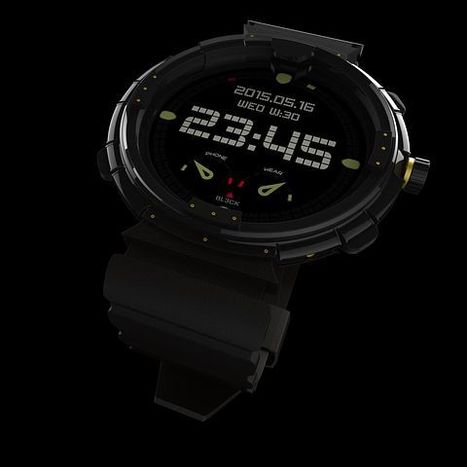

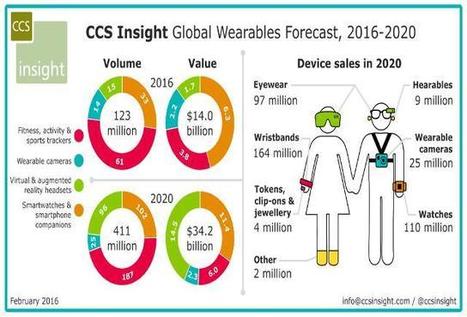
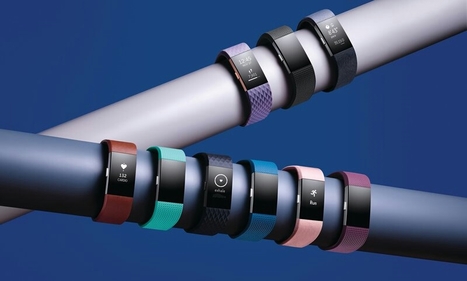
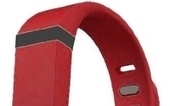
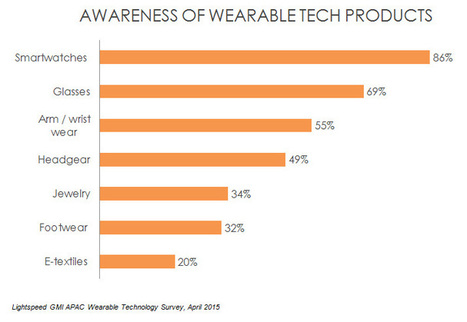


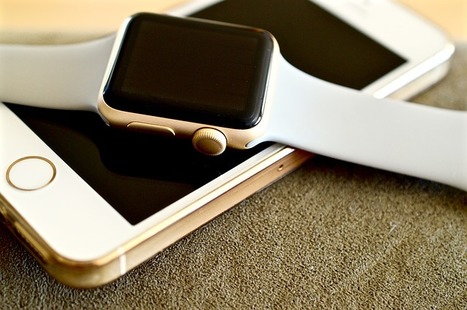


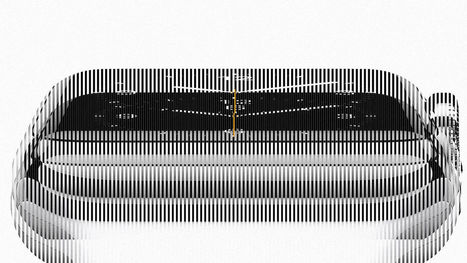










Consumer growth highlighted.